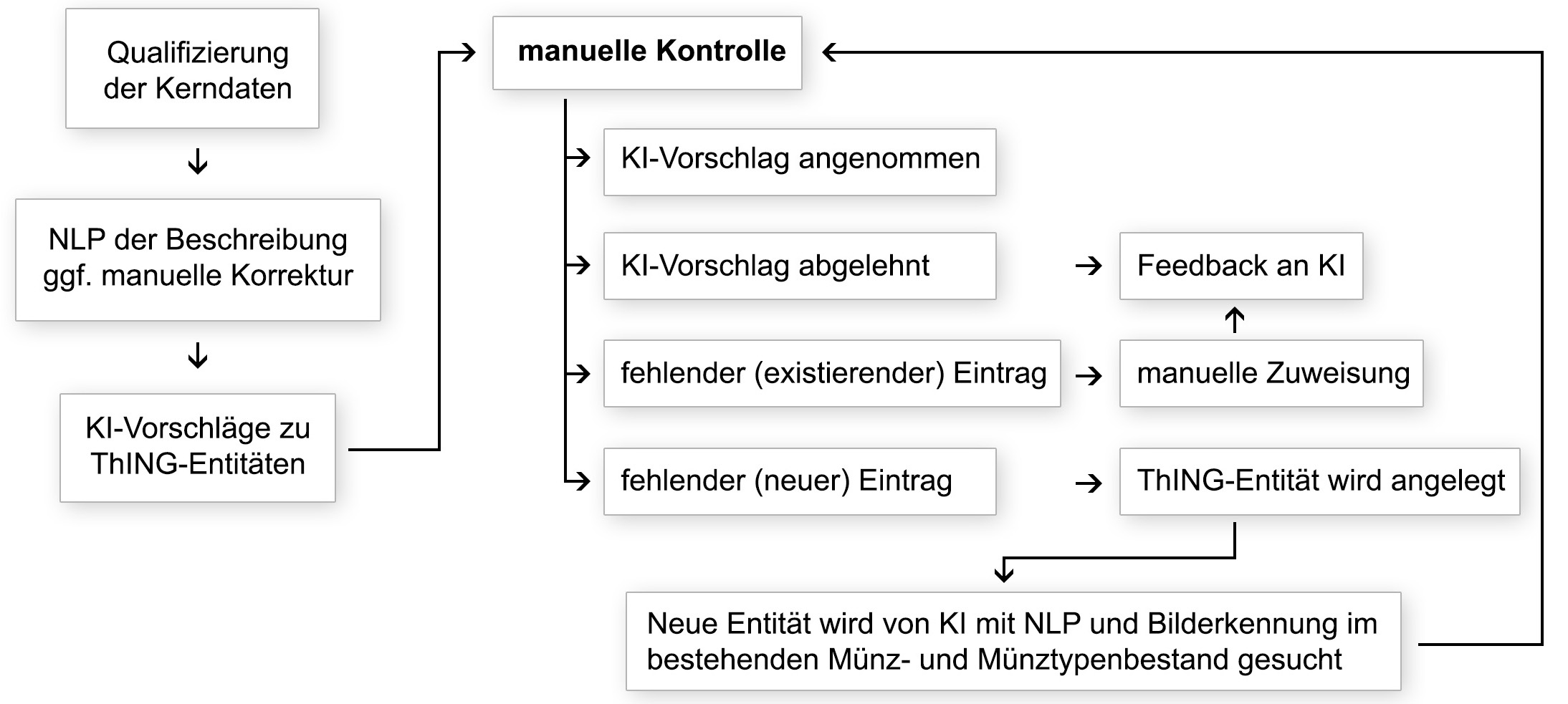Current funding phase
2025-2029: Module 1: Image Meaning in a Spatial Context: Intercultural Networks and Coins as Image Vehicles
Module 1 pursues the question of the mobility of coins and their images on the basis of ancient coinage in north-western Asia Minor (Troas and Mysia) and the Black Sea region. Both regions are characterized by Greek colonies that were in exchange with the indigenous population. They can serve as examples of early glocalization: Their cultural forms – and thus also their coinage – were inspired by supra-regional concepts but shaped by local interests.
This already applies to the coin material and the coin shape. In contrast to the Asia Minor world, whose early coins were made of precious metals, the first money in the Black Sea region was made of bronze in the 6th century BC. It consisted of quasi-functional arrowheads and "figurative" money in the form of fish and dolphins.
This early money has technological similarities with the metalworking of the indigenous population. The question of the connection between technology (transfer), image (transfer) and knowledge transfer of these and the subsequent pre-Roman period coinages of the Black Sea region will be addressed. It is striking that some city-states that are geographically far apart from each other fall back on common image types – such as the military types of Olbia, Kerkinitis and Chersonesos, the regional imitations of the Lysimachus bronze coins or the colonies that adopt the image schemata of their mother city.
With these visual networks, the aim is to examine the extent to which the adaptation of image schemata in the Black Sea region leads to a shift – or vice versa: to an intensification – of image meanings. One focus of the investigation will accordingly be on finds of foreign coins that were not minted in the respective city-states. A comparative analysis of the archaic to imperial coinage of the Cimmerian Bosporos and the Balkan region will be used to examine the interplay between the old (metropolis and apoikie) and the newly formed cross-cultural networks. Questions of regionalism and intra-regional divergence in iconographic selection and coin production will be examined. The third region that lends itself to the analysis of networks is north-western Asia Minor – a border region between Europe and Asia that is characterized by a high degree of physical mobility. Using the example of coins from Northwest Asia Minor, the genesis of the pictorial repertoire will be discussed, which shows 'influences' from the Ionic, Aeolian, Athenian, Achaemenid and Roman areas. :image07 Here, it will have to be methodically clarified whether visual similarities of pictorial formulas indicate a cultural contact at all and whether the forms of this contact can be specified (technological, economic, visual, conceptual).
Output Publication of the collection: The 16,064 coins from the Balkan and Black Sea regions and north-western Asia Minor in the Coin Cabinet form the basis for these questions, of which around 50% still need to be contextualized.
Output Thesaurus Iconographicus Nummorum Graecorum Online (ThING): For the ThING, an ontology is being developed and a web representation with a multilingual user interface is being created. For a large part of the ancient Greek coin motifs, standardized iconographic concepts are being developed on the basis of the coins and coin types available in CN and the coins of the Black Sea region. The authority data and iconography portals will be linked; the material of the two-volume lexicon of Greek coin inscriptions by Leschhorn & Franke will be digitally recorded and integrated into the ThING.

Output Digital tools: Work on the digital tools will initially focus on transformation scripts and import routines in order to intensify the integration between CN, IKMK and other platforms. The CN free text search is to be expanded to include NLP integration and other new functions (e.g. fuzzy search). Furthermore, IIIF for the images as well as statistical cluster and network visualizations will be implemented, NLP training will be continued and a GUI for semantic queries will be developed. Scripts are to be created for updating the standard data.
Output Image Science: In addition to the research contributions of the academic staff, the output consists of a conference and an exhibition on the topic of "Visual networks and the mobility of images".